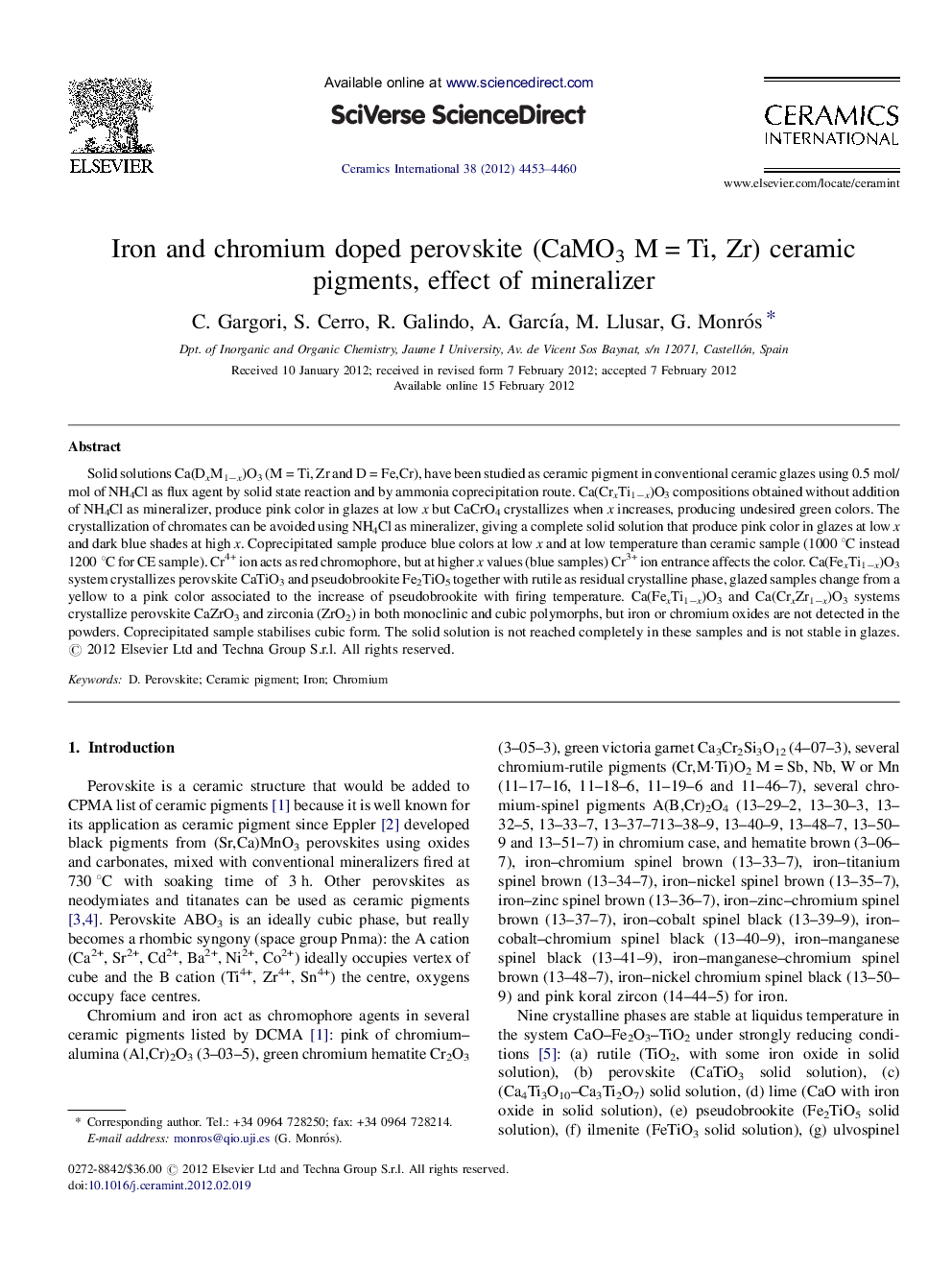| Article ID | Journal | Published Year | Pages | File Type |
|---|---|---|---|---|
| 1463704 | Ceramics International | 2012 | 8 Pages |
Solid solutions Ca(DxM1−x)O3 (M = Ti, Zr and D = Fe,Cr), have been studied as ceramic pigment in conventional ceramic glazes using 0.5 mol/mol of NH4Cl as flux agent by solid state reaction and by ammonia coprecipitation route. Ca(CrxTi1−x)O3 compositions obtained without addition of NH4Cl as mineralizer, produce pink color in glazes at low x but CaCrO4 crystallizes when x increases, producing undesired green colors. The crystallization of chromates can be avoided using NH4Cl as mineralizer, giving a complete solid solution that produce pink color in glazes at low x and dark blue shades at high x. Coprecipitated sample produce blue colors at low x and at low temperature than ceramic sample (1000 °C instead 1200 °C for CE sample). Cr4+ ion acts as red chromophore, but at higher x values (blue samples) Cr3+ ion entrance affects the color. Ca(FexTi1−x)O3 system crystallizes perovskite CaTiO3 and pseudobrookite Fe2TiO5 together with rutile as residual crystalline phase, glazed samples change from a yellow to a pink color associated to the increase of pseudobrookite with firing temperature. Ca(FexTi1−x)O3 and Ca(CrxZr1−x)O3 systems crystallize perovskite CaZrO3 and zirconia (ZrO2) in both monoclinic and cubic polymorphs, but iron or chromium oxides are not detected in the powders. Coprecipitated sample stabilises cubic form. The solid solution is not reached completely in these samples and is not stable in glazes.
